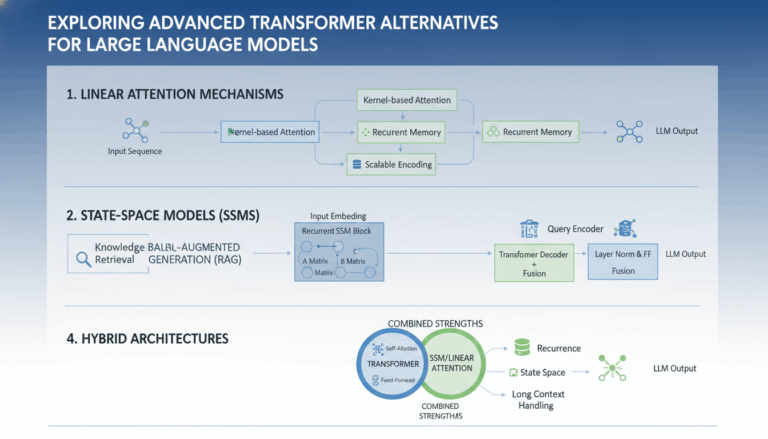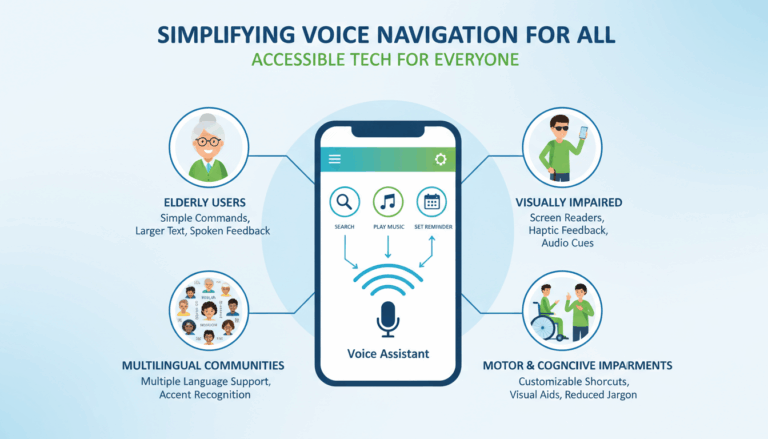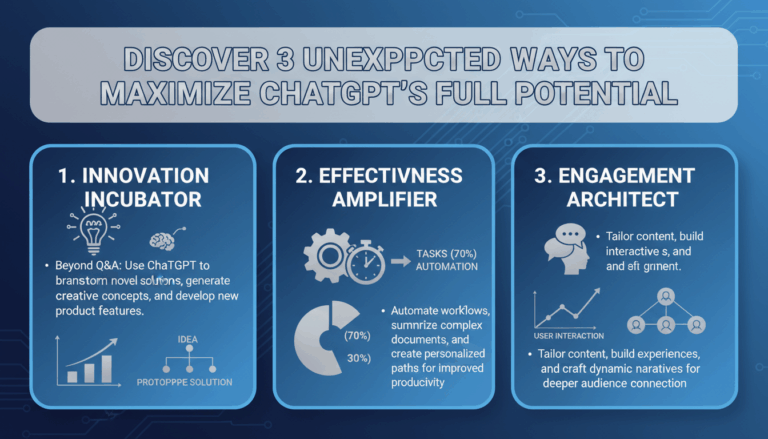Introduction to Distributional Semantics
Distributional semantics is an area of computational linguistics that explores how to represent and analyze the meaning of words in context. At its core, this approach relies on the observation that the meanings of words can be inferred from the contexts in which they appear. This concept is commonly summed up by the phrase “you shall know a word by the company it keeps,” a notion famously articulated by British linguist J.R. Firth.
In practical terms, distributional semantics involves analyzing large corpora of text to identify patterns in how words co-occur with one another. These patterns are then used to construct mathematical models that represent semantic meanings. One common method employed is the vector space model, in which words are represented as vectors in a high-dimensional space. The proximity of these vectors to one another is used to determine semantic similarity.
For example, consider the words “dog” and “cat.” In a large dataset, these words might often appear next to similar context words such as “pet,” “animal,” and “fur.” The vectors representing “dog” and “cat” in the semantic space would therefore be positioned close to each other, reflecting a shared context and thereby indicating a similarity in meaning.
A primary tool for generating these vectors is the algorithm word2vec, developed by Google. Word2vec is capable of processing text by employing either a Continuous Bag of Words (CBOW) model or a Skip-Gram model. The CBOW model predicts a target word based on its context, while the Skip-Gram model does the opposite, predicting the context from a given target word. Both methods aim to produce word vectors that accurately capture semantic relationships by maximizing the similarity between words that appear in similar contexts.
Another popular technique within distributional semantics is GloVe (Global Vectors for Word Representation), which directly models the probability distributions of word co-occurrences. GloVe constructs word vectors by factorizing a matrix of word co-occurrence counts, focusing on the global statistical information present in a text corpus.
Distributional semantics has profound implications for natural language processing (NLP) tasks. It enables machines to comprehend and generate language in ways that reflect human understanding. For instance, these models enhance the performance of applications like machine translation, sentiment analysis, and information retrieval.
Furthermore, advancements within distributional semantics have led to the development of contextualized word embeddings, such as those generated by BERT (Bidirectional Encoder Representations from Transformers). Unlike traditional methods that assign a single fixed vector to each word, these newer models produce dynamic vectors that consider a word’s context within a sentence, allowing for more nuanced semantic interpretation.
Through these methods and models, distributional semantics continues to deepen our understanding of language, providing tools to unravel complexities in word associations that are fundamental to human communication.
The Distributional Hypothesis: Understanding Word Meaning through Context
The idea that word meanings can be discerned from their textual surroundings is the foundation of the distributional hypothesis. This hypothesis is crucial for understanding how language is structured and interpreted from a computational perspective. Essentially, it posits that words appearing in similar contexts tend to have similar meanings, a principle that enables the creation of models capable of semantic interpretation.
The hypothesis finds its roots in the early 20th century developments in linguistic theory. Specifically, it builds on the work of linguists like J.R. Firth and Zellig Harris, who both emphasized the relational properties of words in analytical contexts. Harris articulated this notion succinctly by stating, “words are defined by the company they keep,” indicating that the syntactic and semantic properties of a word can be derived from the environments in which it is used.
To illustrate this, consider the words “bank” and “river.” Although the word “bank” can imply multiple meanings, when used in conjunction with words like “water,” “shore,” or “stream,” it is understood to represent the side of a river rather than a financial institution. The surrounding words guide the interpretation by narrowing the possible meanings.
In computational terms, this hypothesis facilitates the design of algorithms that analyze word co-occurrences within large text corpora. When a vast collection of text is examined, certain patterns emerge concerning which words are commonly found together. For machine learning models, this co-occurrence data is invaluable. It allows for the construction of vector-based representations of words which are foundational to modern Natural Language Processing (NLP).
One specific model that leverages this principle is Word2Vec. In Word2Vec, words are transformed into vectors where their “meanings” are represented in a continuous vector space. The spatial distance between vectors is indicative of the semantic similarity between words based on their context. For instance, vectors for “king” and “queen” might be nearer one another than “king” and “car,” reflecting similar contextual usages despite differences in individual meaning.
Another method, the GloVe model, constructs its word embeddings by analyzing the global statistical information of word occurrences across a corpus, accounting for the distributional properties emphasized by the hypothesis. It helps to provide a broader understanding of word relationships by considering the matrix of word co-occurrence probabilities. The distributional hypothesis underpins these methodologies, allowing such techniques to effectively encapsulate semantic meaning and context.
The implications of this hypothesis are extensive, impacting diverse areas such as sentiment analysis, information retrieval, and machine translation. In sentiment analysis, for example, understanding the context surrounding a word determines whether its connotation is positive or negative. Similarly, in information retrieval, the context provided by the surrounding words aids engines in deciphering the user’s true intent.
In a modern context, distributional models are continually evolving. Tools like BERT and other transformer-based models have leveraged the hypothesis by incorporating it into architectures that not only rely on static word embeddings but generate contextualized vectors. These models achieve a deeper level of understanding by dynamically adjusting word meanings based on context within specific sentences, increasing accuracy in understanding nuances in language.
In summary, the distributional hypothesis is a compelling concept that aids in interpreting the complexities of language, enabling the development of sophisticated models that process and understand text similar to human cognition. It remains a pillar in the quest to decode and model human languages computationally, proving instrumental in unveiling semantic connections that form the bedrock of communication.
Constructing Co-occurrence Matrices: Methods and Applications
In the realm of distributional semantics, constructing co-occurrence matrices is an essential process, serving as the foundation for many models of word meaning and context. Co-occurrence matrices capture the frequency with which different words appear in proximity to one another within a text corpus. This information is vital for understanding semantic relationships based on the principle that words used in similar contexts tend to have similar meanings.
The process of constructing co-occurrence matrices involves several steps, each targeting the robust capture of contextual relationships between words:
-
Define the Context Window: The initial step is to establish the “window size” around the target word. This is typically represented by a number that specifies how many words to the left and right are considered relevant context. For example, with a window size of 2, the context for the word “bank” in the phrase “river bank with boats” includes “river” and “with.” Choosing an effective window size requires balancing between capturing sufficient context without introducing unrelated noise.
-
Tokenization: The text corpus must be broken down into individual tokens or words. This process involves parsing the text and handling linguistic variances such as punctuation, capitalization, and word forms. Tokenization ensures that each word is distinct and ready for analysis.
-
Constructing the Matrix: Once tokenization is complete, a matrix is constructed with words from the vocabulary as both the rows and columns. The cells of the matrix represent the frequency of co-occurrence between the corresponding row and column words. If the word “dog” appears frequently near “bark,” the entry for (dog, bark) in the matrix will have a higher count.
-
Matrix Sparsity and Dimensionality Reduction: Co-occurrence matrices can be massive, especially with large vocabularies. Tools like Singular Value Decomposition (SVD) are commonly deployed to reduce the dimensionality of these matrices, maintaining the integrity of the semantic information while making computations more feasible. Dimensionality reduction aids in highlighting key patterns by focusing on the most informative aspects of the matrix.
-
Normalization and Weighting: It’s often beneficial to normalize the matrix or apply weighting schemes to emphasize more meaningful associations. Techniques like Positive Pointwise Mutual Information (PPMI) adjust raw frequencies to spotlight words that have meaningful statistical associations. Through these techniques, the effect of overly common words (like “the” or “is”) is minimized, allowing more significant relational patterns to emerge.
The applications of co-occurrence matrices are expansive, especially in the field of natural language processing (NLP). They lay the groundwork for building word embeddings, such as those derived from models like Word2Vec and GloVe. These embeddings are instrumental in tasks like semantic similarity measurement, where the goal is to determine how closely two words relate based on their contexts.
Moreover, co-occurrence matrices support machine learning models in areas such as topic modeling, where they help identify latent themes within a corpus. By analyzing patterns of word usage across documents, models like Latent Dirichlet Allocation (LDA) can uncover hidden topics, thereby enabling better document classification and information retrieval.
In text-based recommendation systems, co-occurrence matrices enhance content suggestions by evaluating user preferences through contextual word relations. For instance, understanding that “thrilling” frequently co-occurs with “mystery” genres can aid systems in recommending books or movies that match a user’s taste.
In summary, constructing co-occurrence matrices is a vital methodology for capturing the intricate web of word relationships within text. Through careful construction and manipulation, these matrices provide a gateway to understanding language in a way that mirrors human cognitive processes, enabling more intelligent, responsive, and context-sensitive AI systems.
Vector Space Models: Representing Words in High-Dimensional Spaces
The representation of words in high-dimensional spaces is a cornerstone concept of vector space models, which are widely used in natural language processing (NLP) to capture semantic meanings. These models map words or phrases to vectors of numbers, typically in hundreds of dimensions, allowing for the encoding of complex semantic relationships through spatial proximity and vector operations.
In a vector space model, each word is represented by a vector, essentially a point in a high-dimensional space. The dimensions of this space correspond to features or properties that are extracted from a text corpus. The position of a word’s vector in this space conveys its meaning based on the direction and magnitude of the vector in relation to others. The closer two word vectors are, the more semantically similar they are likely to be.
Mathematical Foundations
The mathematical backbone of vector space models often involves linear algebra. Words are represented as vectors and stored in a matrix, where each row corresponds to a word and each column represents a context feature. This setup allows for efficient computation of similarities between words using vector arithmetic.
One common measure of similarity is cosine similarity, which calculates the cosine of the angle between two vectors. If vectors are closer in direction, the cosine similarity will be higher, indicating greater semantic similarity. This mathematical operation enables various NLP applications like word sense disambiguation, semantic search, and more.
Word2Vec and Training
Word2Vec, a popular algorithm developed by Google, exemplifies how vector space models are employed to create word embeddings. It uses shallow neural networks to train word representations such that words sharing similar contexts in the corpus have closer embeddings.
Word2Vec provides two techniques:
-
Continuous Bag of Words (CBOW): This predicts the target word based on surrounding context words within a defined window size. The idea is to learn a vector representation such that the combination of context word vectors predicts the target word accurately.
-
Skip-Gram: This method works inversely by using the target word to predict its context words. Skip-Gram is particularly effective for capturing the wide semantic relationships of less frequent words due to its emphasis on different surrounding words.
Training these models involves iteratively adjusting word vectors to minimize the error between predicted and actual contexts, thereby refining the embeddings’ ability to represent semantic content accurately.
GloVe and Global Context
Another approach to building word vectors is the GloVe model (Global Vectors for Word Representation). Unlike Word2Vec, which operates on local context windows, GloVe captures global statistical information in word co-occurrences across the entire corpus.
GloVe involves constructing a large word-context co-occurrence matrix and factorizing it to produce word vectors. The key idea is to leverage the ratio of co-occurrence probabilities, capturing even nuanced semantic relationships by maintaining ratios that reflect word similarity and difference within the data.
Use Cases and Benefits
Vector space models are integral to improving the performance of a variety of NLP applications:
- Semantic Search: Vectors allow search engines to understand synonyms and context, returning more relevant results for ambiguous queries.
- Machine Translation: Word embeddings help in understanding source and target languages, aiding in the translation of context rather than just words.
- Sentiment Analysis: By using vectors, machine learning models can more accurately detect sentiment trends based on word contexts and nuances.
Challenges and Future Directions
One of the primary challenges with vector space models is managing the curse of dimensionality—where spaces become too vast with too many dimensions, which can complicate analysis and process efficiency. Additionally, these models sometimes struggle with polysemy, where a single word might have multiple meanings that change with context.
Emerging approaches like contextualized word embeddings attempt to tackle these issues by not sticking to single vector representations. Models like BERT analyze words in the context of entire sentences, producing dynamic, context-aware embeddings that reflect real-time meaning shifts.
Overall, vector space models provide a robust framework for quantifying and leveraging the semantic relationships of language, thereby powering advancements in linguistically intelligent systems.
Measuring Semantic Similarity: Techniques and Metrics
In the world of natural language processing (NLP), measuring semantic similarity is fundamental for tasks that involve understanding the meaning of words, sentences, or even entire documents. This measurement informs various applications, from sentiment analysis to machine translation. The approaches to determining semantic similarity can be broadly divided into knowledge-based, corpus-based, and hybrid methods. Each offers distinct advantages depending on the context and specific requirements of an application.
Knowledge-based techniques leverage structured semantic knowledge about words and concepts. Resources such as WordNet—a lexical database of English—provide pre-defined relationships like synonyms and hypernyms, forming ontological structures that can be quantitatively analyzed.
Path-based Metrics
One path-based method involves counting the number of edges between concepts in a semantic network like WordNet. The shorter the path, the more semantically similar two words are assumed to be. For example, the words “car” and “vehicle” might be closely related in WordNet, resulting in a smaller path distance than “car” and “bike.”
This straightforward metric, however, doesn’t necessarily account for variability in path length due to network structure, prompting more refined approaches like the Leacock-Chodorow measure, which normalizes path lengths using the maximum depth of the taxonomy, enhancing the reliability of similarity scores.
Feature-based Approaches
Feature-based strategies, on the other hand, focus on statistical analysis of word co-occurrences within large corpora. These methods assume that semantically similar words occur in similar contexts—a principle grounded in the distributional hypothesis.
A prominent example is the vector space model where words are represented as vectors in high-dimensional spaces. Words like “dog” and “puppy” would exhibit high cosine similarity due to shared context words such as “bark” and “pet.” Corpus-based techniques like Latent Semantic Analysis (LSA) and the usage of embeddings produced by Word2Vec, GloVe, or FastText enhance this approach by reducing dimensionality and refining context understanding.
Latent Semantic Analysis (LSA)
LSA utilizes singular value decomposition to transform and reduce the dimensionality of term-document matrices extracted from corpora. This reduction helps in identifying underlying latent structures, revealing word similarities that are not immediately apparent. In practice, LSA may find that terms like “disease” and “illness” have high semantic similarity, reinforcing thematic linkages across documents that discuss medical topics.
Neural Embeddings
With advancements in neural networks, embeddings produced by models such as BERT (Bidirectional Encoder Representations from Transformers) have revolutionized semantic similarity measurement. Unlike static embeddings, BERT generates dynamic, context-sensitive vectors, capturing nuanced meanings that are essential for understanding context-dependent semantics. For instance, in the sentence “the bank closed after the flood,” BERT helps differentiate “bank” as a riverbank, enriching the similarity score with contextual awareness.
Evaluations and Benchmarks
To evaluate these techniques, benchmark datasets like SemEval provide standardized tasks and annotations, facilitating comparison of semantic similarity approaches. These benchmarks often test against human judgments, ensuring the computational models align closely with human perception of semantic relationships.
Hybrid Approaches
Hybrid methods marry the strengths of both knowledge-based and corpus-based techniques, using semantic networks alongside statistical data to refine similarity scores. This blend addresses limitations inherent to each approach independently, offering robustness across varied linguistic domains.
Mapping semantic similarity using these techniques is crucial for advancing the goals of NLP applications. By continuously refining metrics and leveraging both existing and novel algorithms, researchers and practitioners can achieve more accurate interpretations of semantic relationships, driving innovations in teaching machines to understand language much like humans do.
Applications of Distributional Semantics in Natural Language Processing
Distributional semantics plays an essential role in various natural language processing (NLP) applications by enabling computers to understand linguistic contexts and semantic relationships similarly to humans. One of the significant ways it enhances NLP is through machine translation. By leveraging word vectors generated through methods like Word2Vec or GloVe, machine translation systems can more effectively capture the nuances of meaning between languages. For instance, understanding the context of a phrase allows the system to select the most appropriate term in the target language rather than relying solely on direct word-for-word translations, thus improving the accuracy and fluency of translations.
Another key application is information retrieval. Search engines utilize the semantic similarity of word vectors to provide more relevant search results. When a user inputs a query, the engine can explore related terms and contexts within its database to bring up information that might not include the exact search terms but shares similar meanings. This capacity extends to semantic search, where understanding synonyms and language intent leads to more precise results aligned with the user’s informational needs.
Sentiment analysis benefits significantly from distributional semantics by enhancing the system’s ability to detect sentiment cues and tones in text. For example, understanding the difference in sentiment between words like “happy” and “joyful” involves recognizing their placement within similar favorable contexts, allowing for more nuanced analysis of emotions expressed in text data. Such sophistication is vital for businesses wanting to gauge consumer sentiment on social media or reviews accurately.
In chatbots and conversational agents, distributional semantics enables more natural and context-aware interactions. By contextualizing user inputs, these systems can generate meaningful responses that consider the evolving dialogue. This contextual awareness is especially evident in advanced models like BERT, which produce personalized and contextually relevant replies by dynamically learning from the conversation.
Distributional semantics is also applied in text summarization, where the goal is to distill large volumes of information into concise summaries while maintaining the original context and meaning. By analyzing co-occurrence patterns and semantic relationships, models can identify key themes and phrases that capture the essence of the content, thus creating coherent and informative summaries.
Furthermore, topic modeling is another domain where distributional models excel. Tools like Latent Dirichlet Allocation (LDA) classify texts into topics based on word co-occurrence patterns. This capability allows content creators and researchers to understand the primary subjects covered in a body of text, facilitating tasks such as content categorization and recommendation.
Lastly, distributional semantics plays a vital role in named entity recognition (NER), enhancing systems’ abilities to extract entities such as names, locations, and organizations with greater accuracy. By contextualizing entities, models can more reliably distinguish between similarly named but contextually different terms, improving the precision of information extraction.
These applications demonstrate the transformative impact of distributional semantics in NLP, driving advancements that enhance how machines process and understand human language both qualitatively and contextually. As methodologies continue to evolve, the potential for increasingly sophisticated and contextually aware NLP solutions grows, paving the way for more accurate and human-like language processing capabilities.



